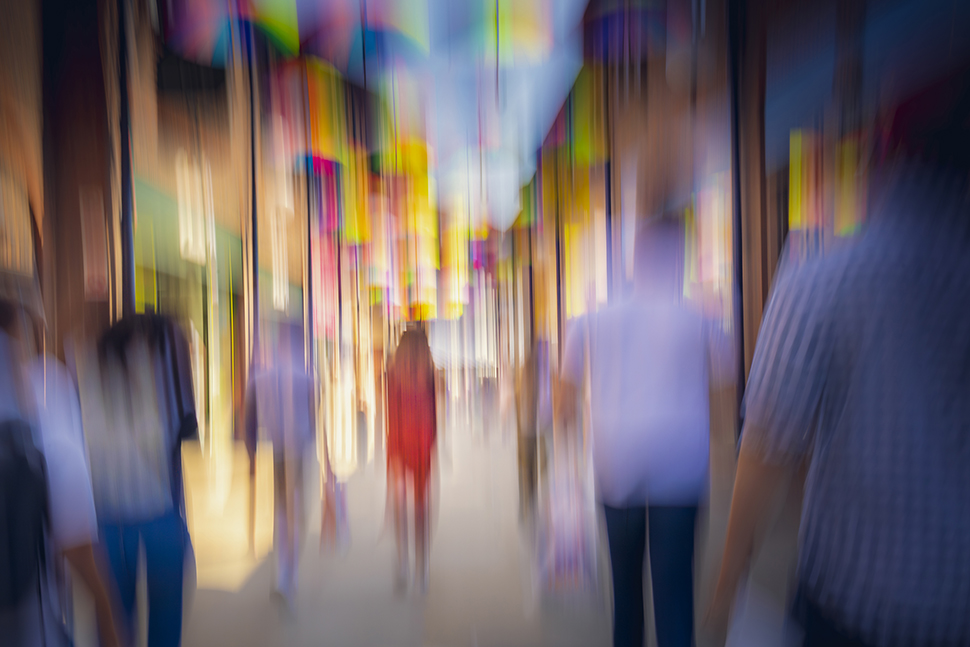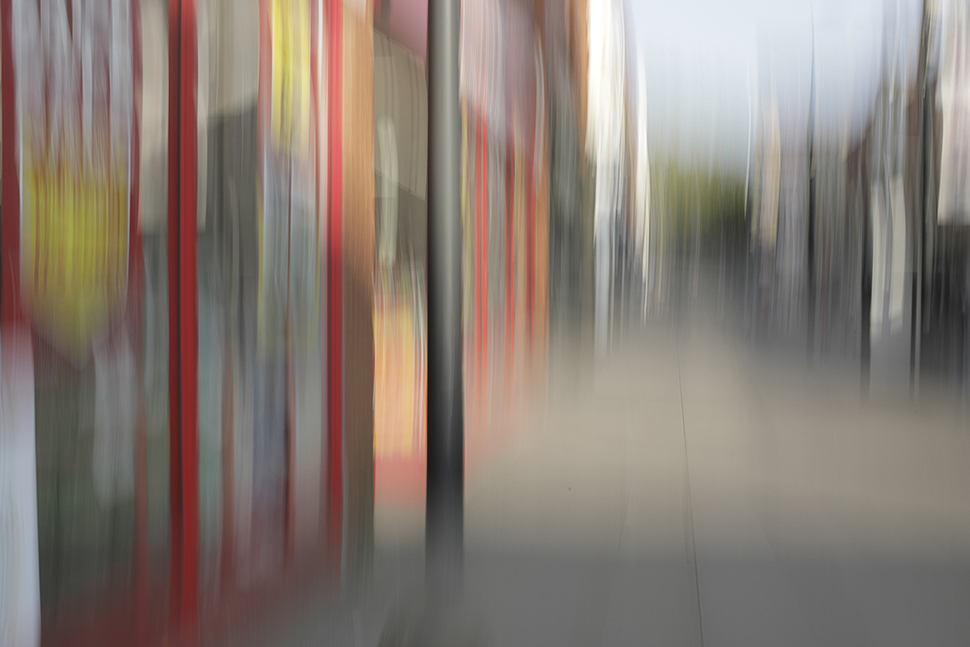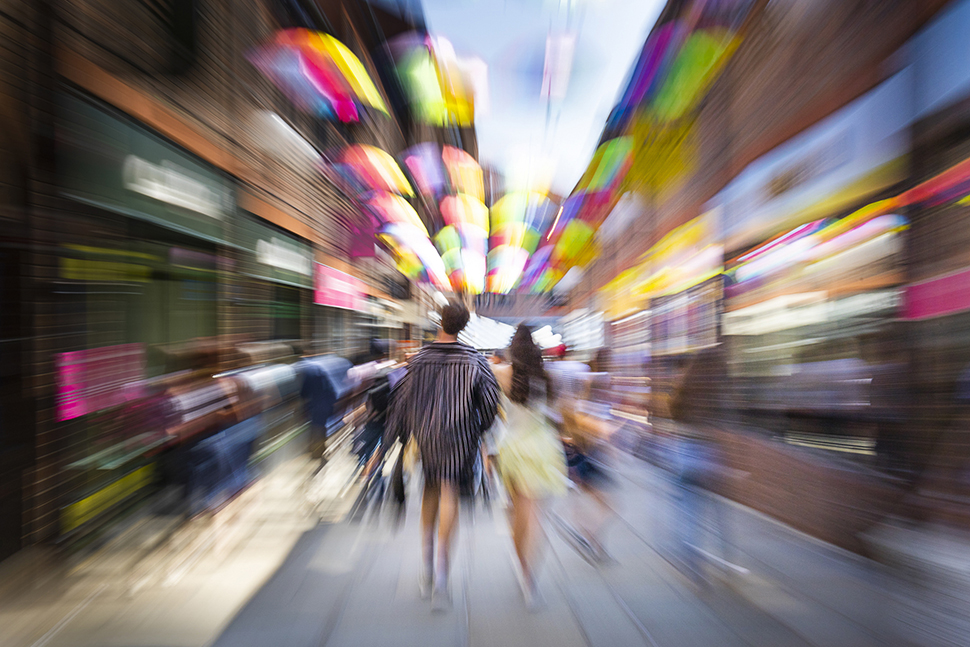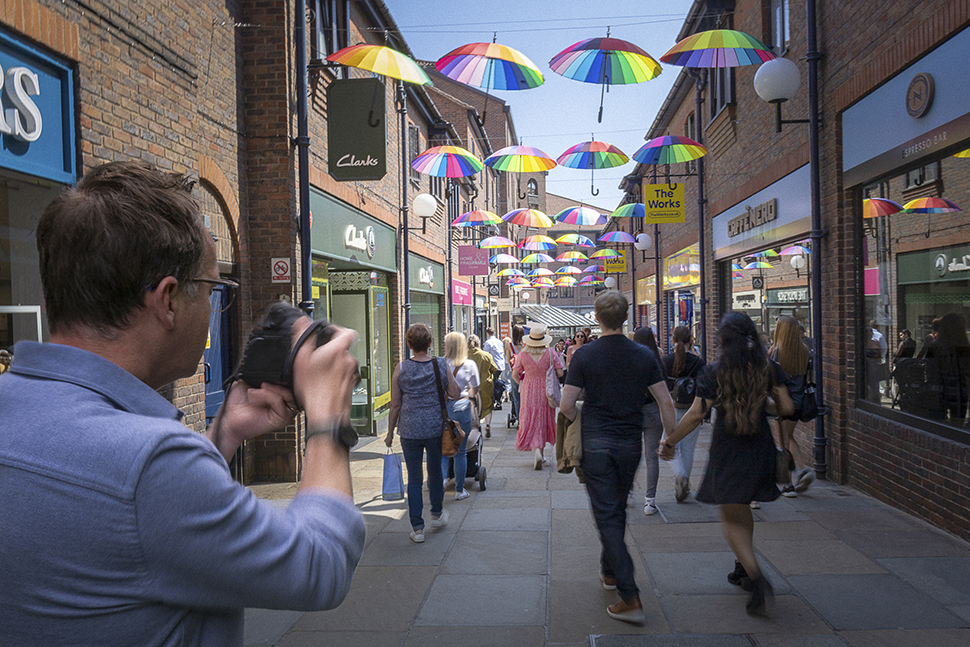How I embrace intentional camera movement to bring a fresh look to my street photography
Discover a simple but effective way to add a new dimension to your street photos

Urban environments can be a frenetic mass of contrasts – vibrant or mundane, lively or eerie, beautiful or drab. For a photographer, it’s easy enough to capture how places like this look, but it’s more of a challenge to convey how they feel.
To create a sense of a place without the distractions of detail, we can turn to abstract techniques that emphasize the emotion of the place, and create wall-worthy art that feels more in touch with the work of Impressionist painters than it does with conventional photographic techniques.
Normally camera skills are about eliminating shake, keeping scenes in focus and preventing wonky horizons – but here, we’re throwing all of that out of the window. Instead, we’ll celebrate blur and softness. When you think about it, streets and buildings are rather simple geometric shapes and lines, dotted with people and lights, making them ripe for an abstract treatment. We can reduce the elements down to blurry strokes of color, impressions of people and flowing shapes, while still retaining the spirit of the scene.
You don’t need any special equipment or lenses for this – in fact, even the cheapest lens will produce results just as good as premium optics. What’s more, you can try this in all conditions – sunny, overcast, rainy, even at night.
Key techniques

Intentional camera movement
There’s beauty in every urban area if you look for it. Search out bold colors and the vertical lines of shop windows or lamp posts, then try an up-down camera movement over a 1/15 sec exposure to create streaks of blur. A side-to-side movement, or even a camera swivel, can also lead to some interesting results.

Zoom bursts
A zoom burst is similar to intentional camera movement, but with a twist. Over the course of a long exposure (try 1/10 sec to begin with), use a zoom lens and quickly zoom in or out during the exposure. The edges of the frame will be transformed into streaks of blur.
How to shoot with intentional camera movement

Camera motion
Intentional camera movement can transform scenes into streaks of blur while still retaining an impression of the place. Move the camera up, down, left, right or swivel it during the exposure. There’s a real skill in doing this – for a smoother motion, it helps to press the camera against your forehead or use a tripod.
Slow shutter speed
We need to slow our shutter speed down so that the camera movements register in the exposure. Try setting your camera to shutter priority at 1/15 sec and ISO 100, then see what kind of blur you get. For a stronger blur effect, either experiment with a longer shutter speed or make quicker camera motions.
Bold colors
One of the main reasons why this scene works for the intentional camera movement technique is because of the colorful rainbow umbrellas hanging over the street and illuminated from behind by sunlight. When blurred by dragging the camera downwards, these offer beautifully bold highlights that filter into the street below.
Focal length
Your choice of lens focal length has an impact on the camera motion. The longer the lens, the more exaggerated the camera motion will be, so with wider lenses, you might need a longer shutter speed or faster camera movement. With a wide angle, the blur is more exaggerated in the center than at the edges.
Try a filter
Depending on the brightness of the scene, you might need to use a filter to reach shutter speeds slow enough to blur the movement of the camera. In bright sunlight, you can usually get as slow as about 1/10 sec with ISO 100, and an f/22 aperture, but if you need to go slower, use an ND filter or polariser.
Compose the shot
Even though we’re intentionally blurring the scene, it helps to choose a street with recognisable shapes and simple geometry, so that the viewer’s eye can still make sense of the abstract shapes. We composed centrally so that the two sides converge in the center and the shoppers recede into the distance.
Read more:
Get the Digital Camera World Newsletter
The best camera deals, reviews, product advice, and unmissable photography news, direct to your inbox!
The lead technique writer on Digital Camera Magazine, PhotoPlus: The Canon Magazine and N-Photo: The Nikon Magazine, James is a fantastic general practice photographer with an enviable array of skills across every genre of photography.
Whether it's flash photography techniques like stroboscopic portraits, astrophotography projects like photographing the Northern Lights, or turning sound into art by making paint dance on a set of speakers, James' tutorials and projects are as creative as they are enjoyable.
He's also a wizard at the dark arts of Photoshop, Lightroom and Affinity Photo, and is capable of some genuine black magic in the digital darkroom, making him one of the leading authorities on photo editing software and techniques.

